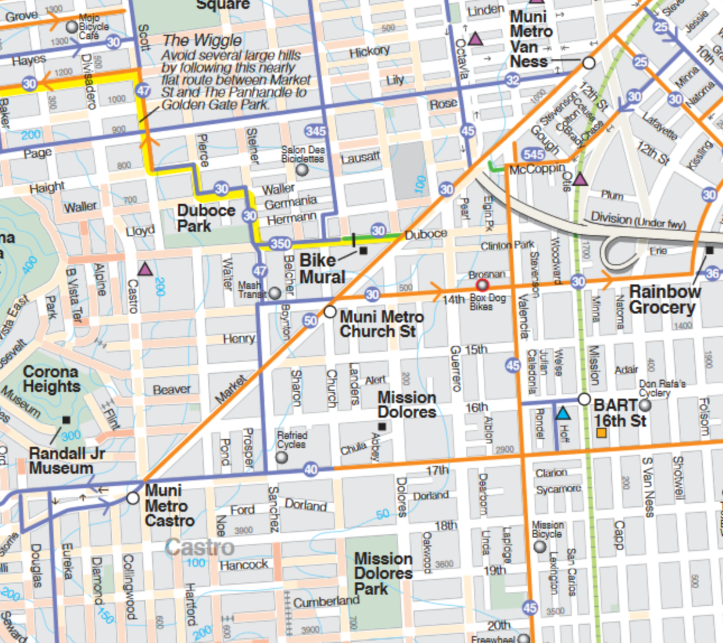
Most of us don’t know the City Bike Route system or the numbers of the individual routes. It is all fairly new and under-celebrated transportation infrastructure. I don’t recall ever seeing any of the route designation signs posted anywhere. So it’s no surprise that there are a few holes in the system.
The one that concerns us is the one that keeps shoppers from the Lower Haight from cruising into the Castro on their bikes to patronize our wonderful stores and businesses. We’re talking about the very beginning of City Bike Route 47, otherwise known as Sanchez St. from 17th St. to Market Street. Did you know that only the strong and fearless will ride that stretch of road? In other words, that route is not a bridge bearing customers but is actually a barrier to commerce. That’s despicable. Please, let me explain.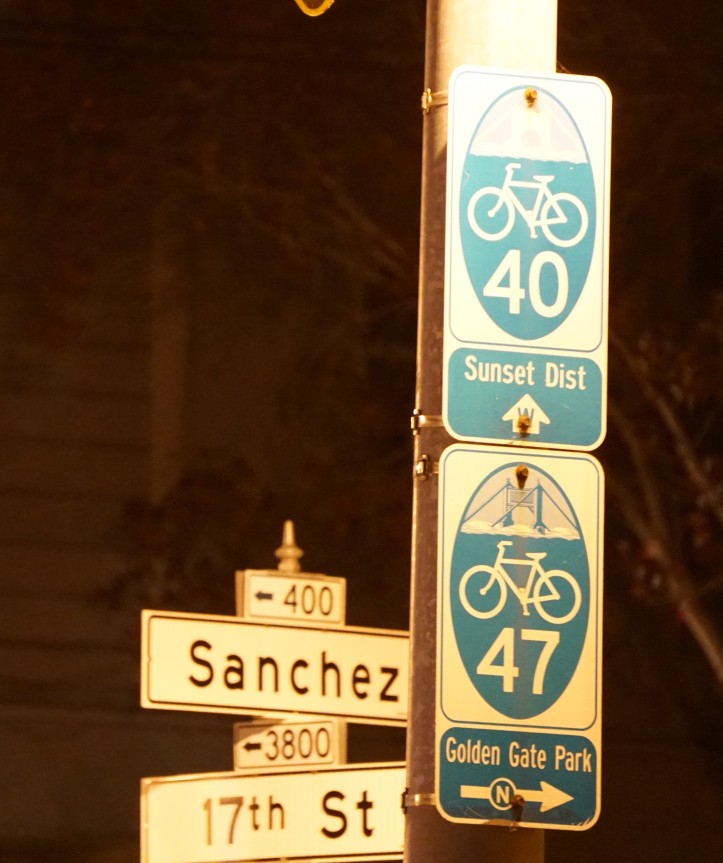
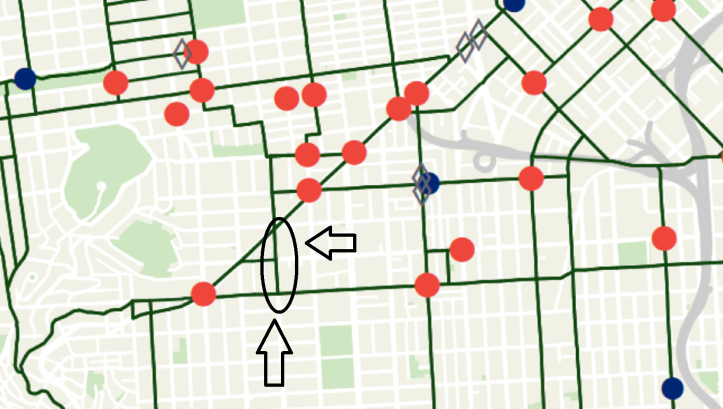
All bike routes are not created equal. Some are better than others for a variety of reasons. But when you want a transportation option to appeal to people and attract riders you try not to make it really scary. And since bikes are the most vulnerable vehicles on the road, bicyclists tend to rate roads by stress level. 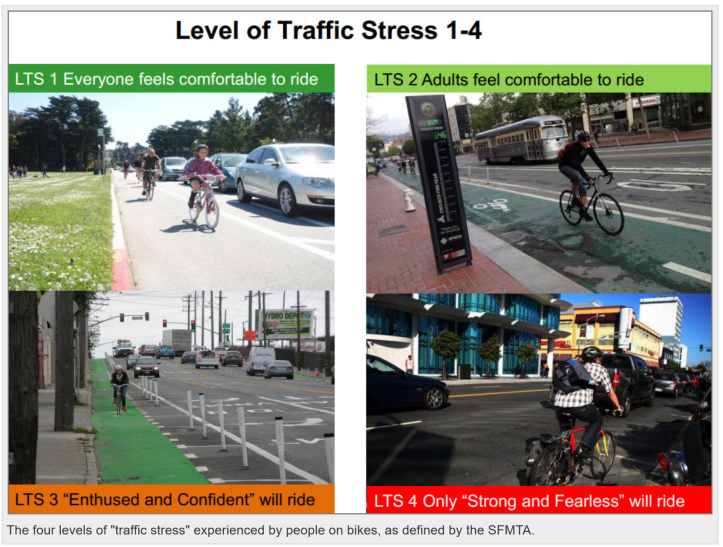
Now lets see how the bicycle riding community rated the general bike path system hereabouts. [Source: StreetsBlogSF, June 19, 2013 – Aaron Bialick]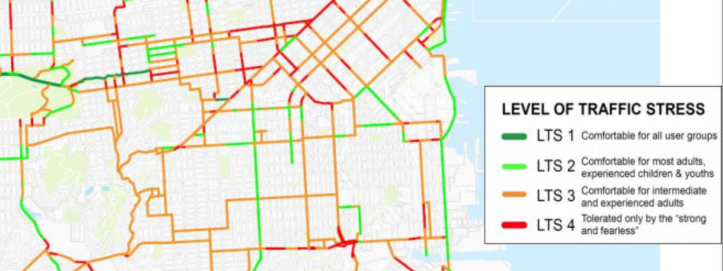 and let’s zoom in real close on our neck of the woods.
and let’s zoom in real close on our neck of the woods.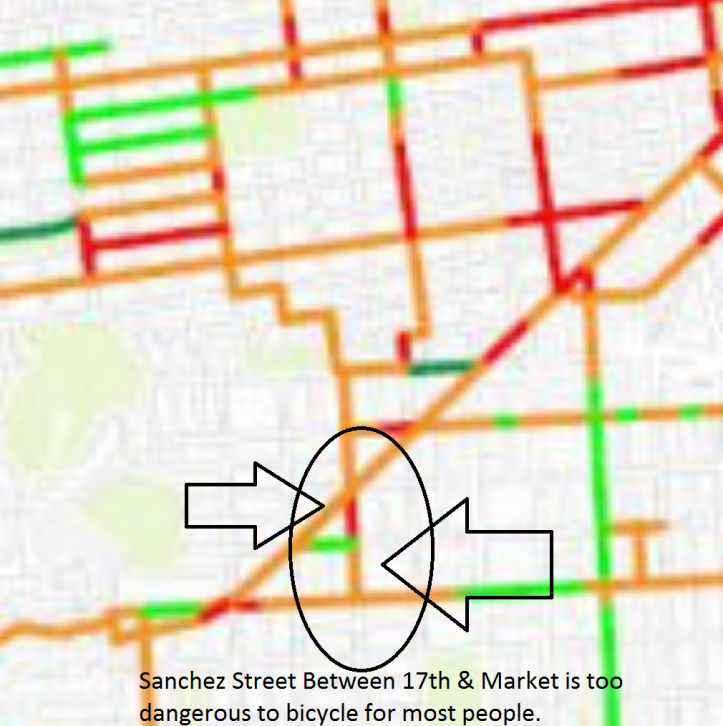
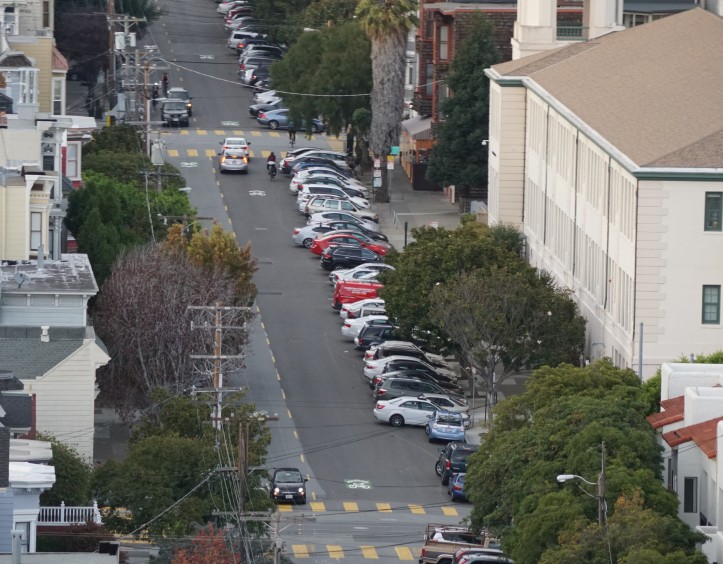
Why are bicyclists afraid of Sanchez Street in the Castro?
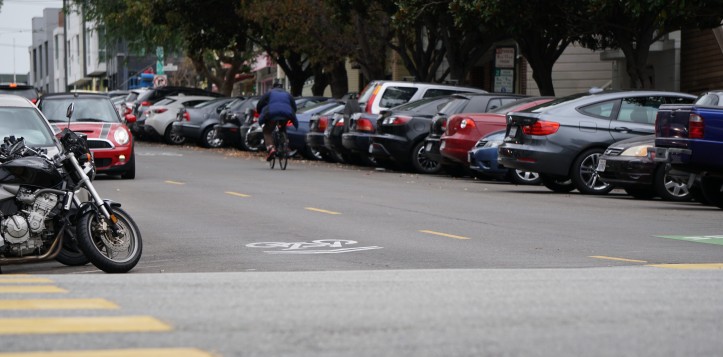
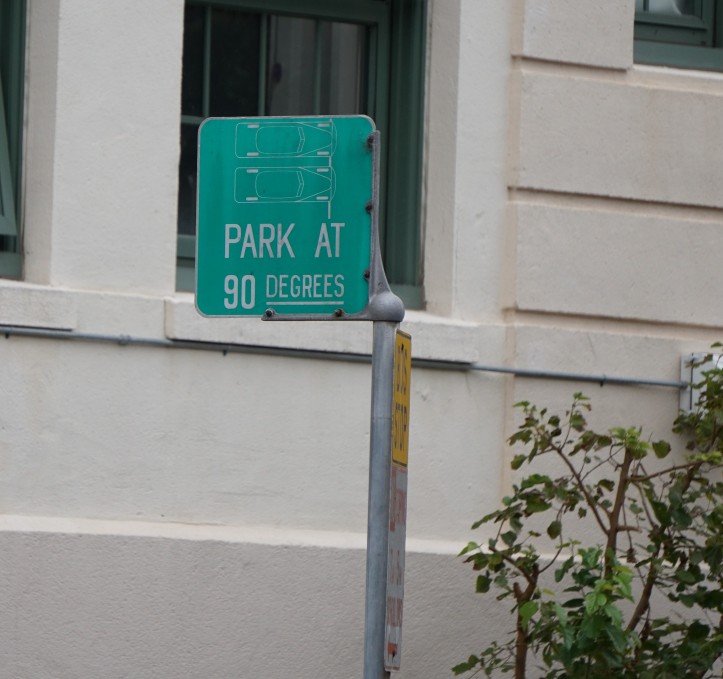
The problem is very specific and affects motorist safety as well. It’s the pull-in front first parking on the East side of Sanchez Street. This has long been recognized as a dangerous way to park because drivers have to back out into traffic to vacate the parking space. It is easy to pull in, but past that first step everything else is much harder for motorists. It is bad having cars back out blindly into moving traffic but having a bike route with this feature is completely insane.

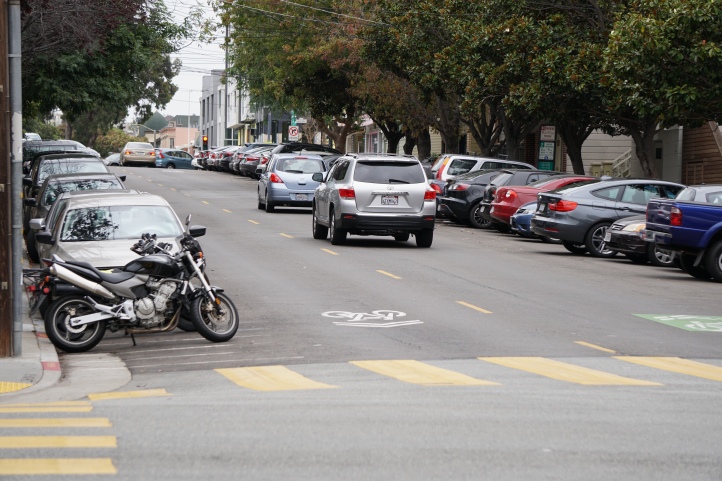
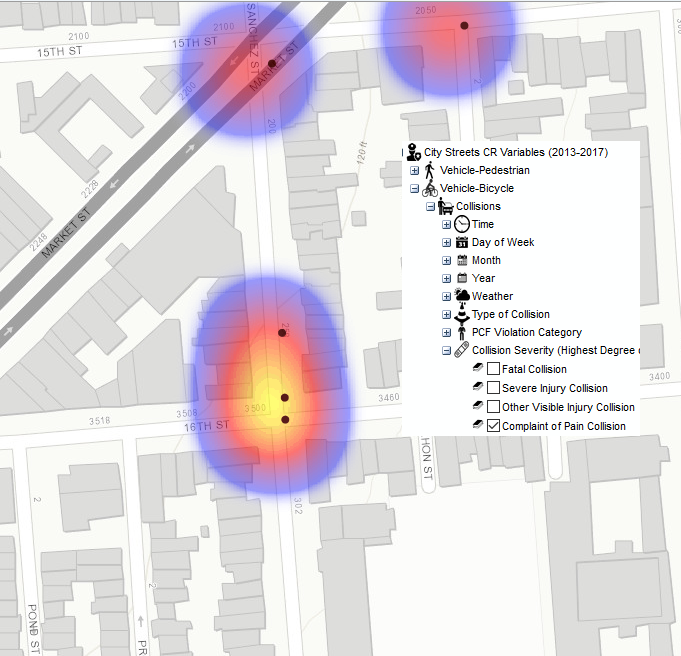
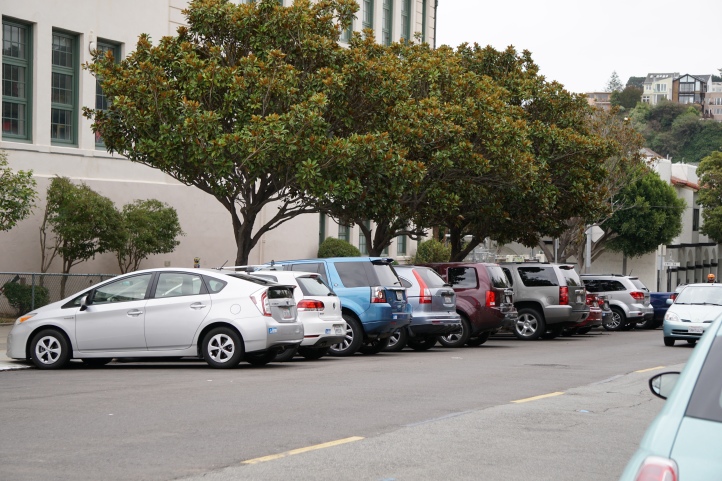
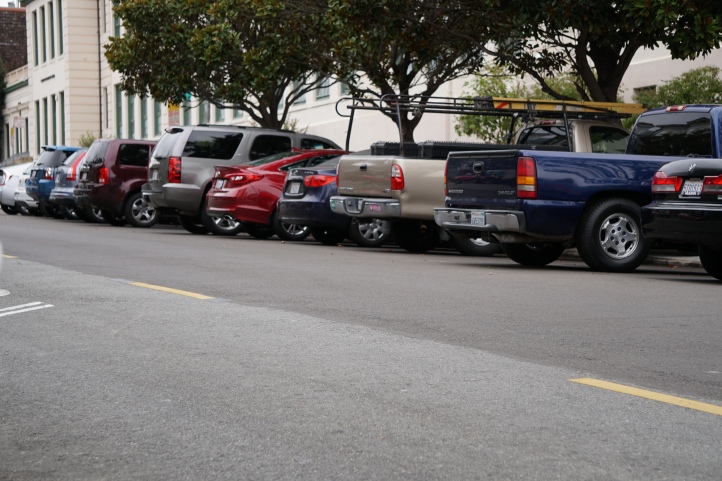
A solution: Reverse Angle Parking
First, back in parking is not a new idea. But this ain’t your Granddaddy’s back in parking. No Sir! Nowadays we use this newfangled thing called angled back in parking.
Let me help you with this concept. Here’s a diagram.
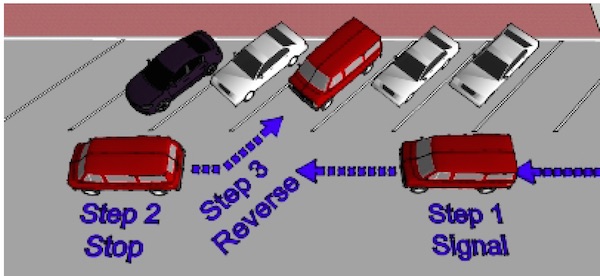
Why is this a better way to park?
- Safer due to better visibility for the driver when the car pulls out of the parking space, even when parked next to large vehicles or vehicles with tinted windows.
- Allows for quicker entry into traffic flow
- Simpler than a parallel parking maneuver
- Trunks/tailgates can be unloaded at the curb (safer).
- Safer unloading of children and pets because the open vehicle door guides them towards safety zone of the sidewalk.
- Safer on inclines because it forces drivers to curb their tires
- Safer for disabled parking, since disabled parking stalls are close to the existing curb ramps, and allows the wheelchair-using drivers to unload out of the way of traffic.
- Vehicle headlights do not shine into homes.

On Bay Street, SFMTA recently installed a new configuration featuring a “parking-protected bike lane” with parking slots that vehicles have to back into, called “back-in angled parking.” It’s part of the Bay Street Road Diet & Cycletrack project. On Sanchez Street bikes and cars will continue to share the road but need to do so in a safer manner.
Back-in angled parking might be new to some, but it’s a standard design used across the United States, from Honolulu to Washington D.C. It’s a safer type of angled parking which allows for people to make better eye contact with oncoming traffic when entering and exiting the parking space.
If you’re confused, back-in angled parking is just like parallel parking, all you have to do is signal, stop and reverse into the parking spot.
The SFMTA installed the first back-in angled parking spaces on Townsend street in 2010. Soon after, they implemented back-in angled parking on a variety of streets including John Muir, Baker between Oak and Fell, and Polk across from City Hall. [Source: MovingSF, December 4th, 2015, Ben Jose for the SFMTA]

And if you want to get really wonkish here’s a worksheet from the Michigan Department of Transportation where they delve into the geometry and mathematics that govern these spaces. Don’t fret the specifics too much because our vehicle length presumptions are a little different in San Francisco. But Sanchez Street is 44 feet wide and there are considerations that one might miss at first glance. 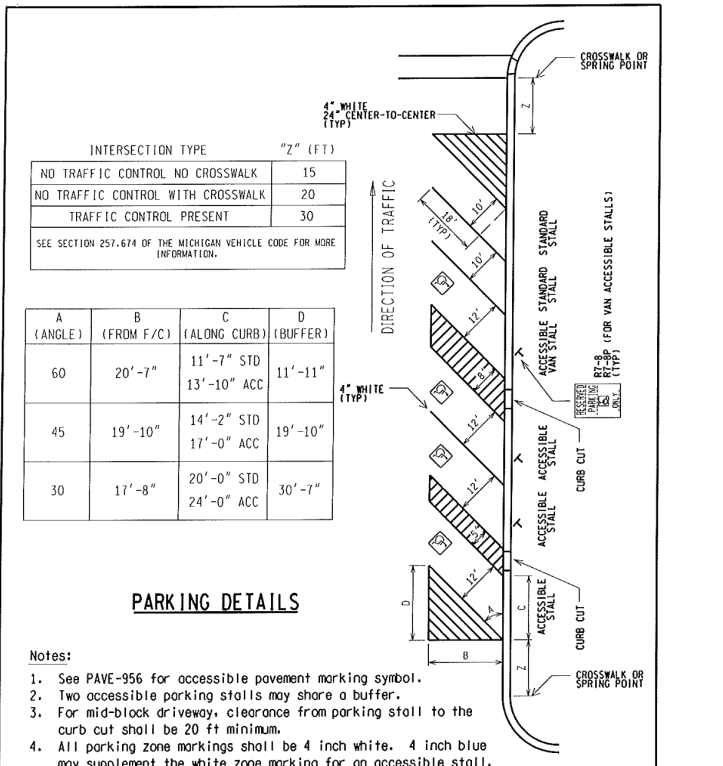
And we would be remiss if we didn’t include the link to the Nelson/Nygaard Study of Back-in/Head-out Angle Parking from San Francisco in January of 2005.
So there you have it. This one relatively small safety upgrade to Sanchez Street could serve to unclog a vital link in our city’s bicycle route network. Think about it. The Lower Haight, the Upper Market and the Castro neighborhoods flowing organically together. One gigantic pool of people who can get from any where to anywhere in the center of our city without a car.
Do you think they would use the opportunity to shop? Would more people opt to use bikes for local trips instead of using their car to drive six blocks and then demanding a parking space? Of course they would and that relaxes the pressure on our precious local parking supply.
Everything is connected.
Thank-you–it’s a great idea! There’s reverse angle parking on a street near the Embarcadero and it works great.
LikeLiked by 1 person